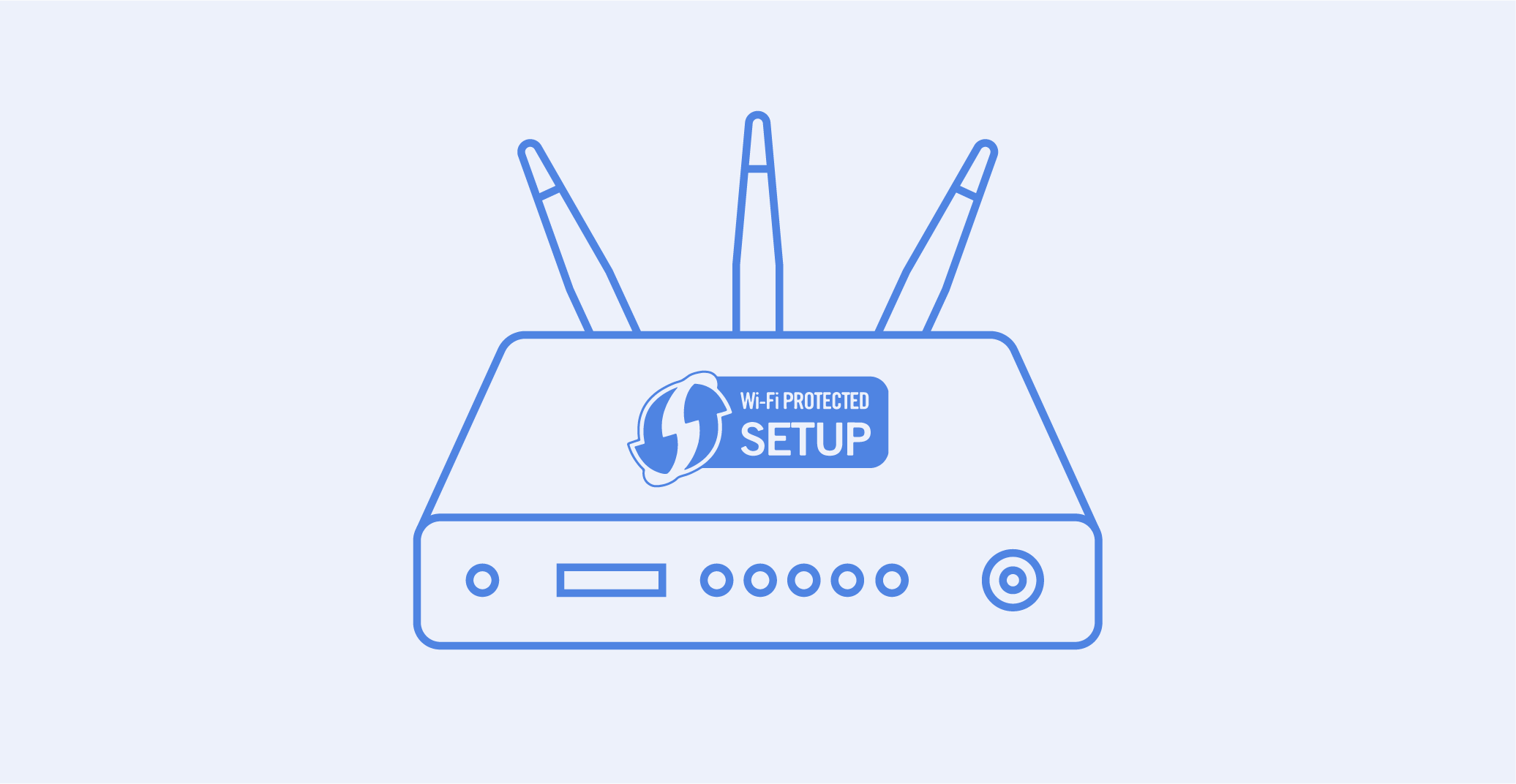If you’ve ever set up a wireless router on your own, you’ve probably heard of WPS. You might come across this term in the router’s configuration menus or see it on the backside of your router — but do you know what WPS actually means and how it works? If you can’t answer these questions yourself, then you’re in the right place.

What is WPS?
WPS stands for WiFi Protected Setup. It’s effectively a wireless network security standard that speeds up and simplifies the process of connecting your device with a router. It helps to do it quickly without entering a Wi-Fi password. To enable WPS you should find a tactile button located on the backside of your router or switch it on in the configurations menu of the router. When you turn it on, WPS mode allows you to connect your various devices to your router using the WPS password, also known as the WPA-PSA key.
In fact, WPS is not responsible for the Wi-Fi connection at all. It’s designed solely to send the connection data between the router and the wireless device. Remember, that’s an important distinction.
WPS was an idea of the nonprofit ‘Wi-Fi Alliance’. The alliance is effectively an association of the largest companies that create computers and Wi-Fi devices. More than 600 members take part, including companies such as Microsoft, Samsung, and Intel. Alliance was founded in 1999 to promote Wi-Fi technologies and certificate Wi-Fi products around the world. This standard was created in 2007 to simplify the connection process and since that time, most Wi-Fi systems around the world have adopted it.
How does WPS work?
If you want to connect your wireless device, you have to know the password to the Wi-Fi network. This process isn’t difficult but it takes some time to get the essential data. WPS makes it easier and a bit quicker.
There are some different ways to do it. First of all, WPS can be a workaround for connecting to Wi-Fi without a password. To do so, you should hit the WPS button on your router to enable device detection. Then, take your device and choose the network you need to connect to. The connection will be immediately available and the system won’t ask you to enter the password.
Some wireless electronic equipment like printers also has a WPS button that can be used to make rapid connections. All you have to do is to push both buttons, on the device and on the router, to get access to the wireless network. You don’t need to enter any data here, as the WPS delivers the password automatically. Also, that device will be able to connect to the same Wi-Fi router without pushing WPS buttons in the future as the password will be remembered.
The other option requires one to use the eight-digit PIN code. When WPS is enabled on a router, a PIN code is produced automatically. The WPS PIN can be found on the WPS setup page. Some devices that lack a WPS button will require the PIN. If you enter the wireless network, they verify themselves and connect to it.
The last option also can be done by using that eight-digit PIN. Some devices do not have the WPS button but also support WPS, so they will produce a client PIN that will be used by the router to connect the device to the network. You should just enter the PIN in the settings of your router to get access.
Unfortunately, methods that require using a PIN code don’t have any benefits in the speed of the connection process. You spend the same amount of time entering the router’s password and the WPS PIN, so you should just choose the way that’s more comfortable for you.
Which devices work with WPS?
WPS is supported by a wide range of devices, most commonly, wireless routers. However, you can also find a WPS button on wireless printers, Wi-Fi Range Extenders and Repeaters, which commonly provide WPS capabilities as well. Finally, the WPS functionality is available on a few higher-end laptops, tablets, smartphones, and 2-in-1 devices, where it’s usually implemented via software rather than physical buttons.
What are the advantages and disadvantages of WPS?
Despite the fact that WPS is embedded in most Wi-Fi equipment, the benefit of this standard is still a controversial issue. Some professionals opt for using it as it makes the connection to the router easier and quicker while others opt against it as WPS mitigates the security of the connection process.
Advantages:
1. It's quick, especially if both the router and the client device have the WPS button.
2. It's simple and requires no technical knowledge. There is no more primitive way of connecting Wi-Fi than pressing the WPS button on both the router and the client device.
3. Support is relatively strong. WPS is supported by all routers and most networking devices. WPS can also be used to establish rapid Wi-Fi network connections on the most common operating systems like Windows, Android, and Linux.
Disadvantages:
1. It isn't really safe. WPS connections using PINs appear to be particularly sensitive to brute-force attacks. A successful WPS attack allows an attacker to obtain access to your Wi-Fi network, and disabling WPS is the only viable remedy.
2. WPS can be used by anyone who has physical access to the router. So any person who is aware of the router’s location can connect it without your permission.
3. WPS is not supported by Apple. You can't connect to Wi-Fi using WPS if you have a Mac, an iPhone, or an iPad. This is because Apple has determined that WPS is insufficiently secure, and thus WPS isn’t not supported by any of the devices.
Conclusion
As we’ve found out, the WPS network’s security standard has both benefits and limitations. On the one hand, it helps us to avoid remembering the Wi-Fi password and connect quickly. On the other hand, WPS is not secure enough to foster user confidence across the board. So, it’s up to you to decide on using WPS or not. In any case, you can disable the function at any time you want by simply switching off the WPS button.


